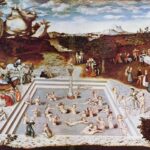Strategies for Engineered Negligible Senescence (SENS)
The leading modern exponent of scientific rejuvenation is the modern biomedical gerontologist Dr. Aubrey de Grey. He calls his project to reverse the damage we call aging SENS (Strategies for Engineered Negligible Senescence). He has proposed seven strategies for the “seven deadly sins”:
- Cell loss can be repaired (reversed) just by suitable exercise in the case of muscle. For other tissues it needs various growth factors to stimulate cell division, or in some cases it needs stem cells.
- Senescent cells, can be removed by activating the immune system against them. Or they can be destroyed by gene therapy to introduce “suicide genes” that only kill senescent cells.
- Protein cross-linking can largely be reversed by drugs that break the links. But to break some of the cross-links we may need to develop enzymatic methods.
- Extracellular garbage (like amyloid) can be eliminated by vaccination that gets immune cells to “eat” the garbage.
- For intracellular junk we need to introduce new enzymes, possibly enzymes from soil bacteria, that can degrade the junk (lipofuscin) that our own natural enzymes cannot degrade.
- For mitochondrial mutations the plan is not to repair them but to prevent harm from the mutations by putting suitably modified copies of the mitochondrial genes into the cell nucleus by gene therapy. The mitochondrial DNA experiences a high degree of mutagenic damage because most free radicals are generated in the mitochondria. A copy of the mitochondrial DNA located in the nucleus will be better protected from free radicals, and there will be better DNA repair when damage occurs. All mitochondrial proteins would then be imported into the mitochondria.
- For cancer (the most lethal consequence of mutations) the strategy is to use gene therapy to delete the genes for telomerase and to eliminate telomerase-independent mechanisms of turning normal cells into “immortal” cancer cells. To compensate for the loss of telomerase in stem cells we would introduce new stem cells every decade or so.

Dr. de Grey has created the Methuselah Mouse Prize, which awards money to researchers who can rejuvenate mice.
Aubrey de Gray’s claim that the only significant effect of nuclear DNA (nDNA) damage is cancer is open to dispute, and this impacts both of his last two strategies (neither of which is appropriately described as “repair”). Evidence of significantly reduced oxidative damage to mitochondrial DNA (mtDNA) and negligible oxidative damage to nDNA in calorie restricted rats [FREE RADICAL BIOLOGY AND MEDICINE; Lopez-Torres,M; 32(9):882-889 (2002)] is misleading because DNA repair capability declines with age. Thymine dimer removal (a form of DNA repair) is about five times greater in newborn fibroblasts than in fibroblasts from the elderly [THE FASEB JOURNAL; Goukassian,D; 14(10):1325-1334 (2000)]. So although DNA damage other than mutation (cancer), may be small in the young, it increases greatly with age. Moving mtDNA into the nucleus would not be as beneficial as he presumes if nDNA is subject to such a decline in DNA repair with age.
A comparison of the heart mitochondria in rats (4-year lifespan) and pigeons (35-year lifespan) showed that pigeon mitochondria leak fewer free radicals than rat mitochondria, despite the fact that both animals have similar metabolic rate and cardiac output. Pigeon heart mitochondria (oxidative phosphorylation protein Complexes I & III) showed a 4.6% free radicals leak compared to a 16% free radical leak in rat heart mitochondria [MECHANISMS OF AGING AND DEVELOPMENT; Herrero,A; 98(2):95-111 (1997)].
Rather than copy mtDNA into the nucleus, it may be a more effective strategy to reduce free radical production in mitochondria by making human Complex I more like the Complex I found in birds, by copying from the bird genome. A comparison of 7 non-primate mammals (mouse, hamster, rat, guinea-pig, rabbit, pig and cow) showed that the rate of mitochondrial superoxide and hydrogen peroxide production in heart and kidney were inversely correlated with maximum life span [FREE RADICAL BIOLOGY & MEDICINE; Ku,HH; 15(6):621-627 (1993)].
A similar study of 8 non-primate mammals showed a direct correlation between maximum lifespan and oxidative damage to mtDNA in heart & brain. There was a 4-fold difference in levels of oxidative damage and a 13-fold difference in longevity, supportive of the idea that mtDNA oxidative damage is not the only cause of aging [THE FASEB JOURNAL; Barja,G; 14(2):312-318 (2000)].
The segmental progerias (“accelerated aging” diseases) are part of the evidence that the weakest link in extending lifespan is DNA repair — along with the fact that DNA repair capability correlates with maximum lifespan in mammals [MECHANISMS OF AGING AND DEVELOPMENT; Cortopassi,GA ; 91(3):211-218 (1996)].
There is much that could be done to improve DNA repair both in the nucleus and in the mitochondria. We could study organisms like the bacterium Deinococcus radiodurans (SCIENCE;White,O; 286:1571-1577 (1999)) and adapt their enzymes to our cells. Thus, improved DNA repair and reduced free radical production (by Complex I proteins taken from birds) may be much more cost effective strategies than SENS for reducing aging-damage, extending maximum lifespan and preventing cancer.







